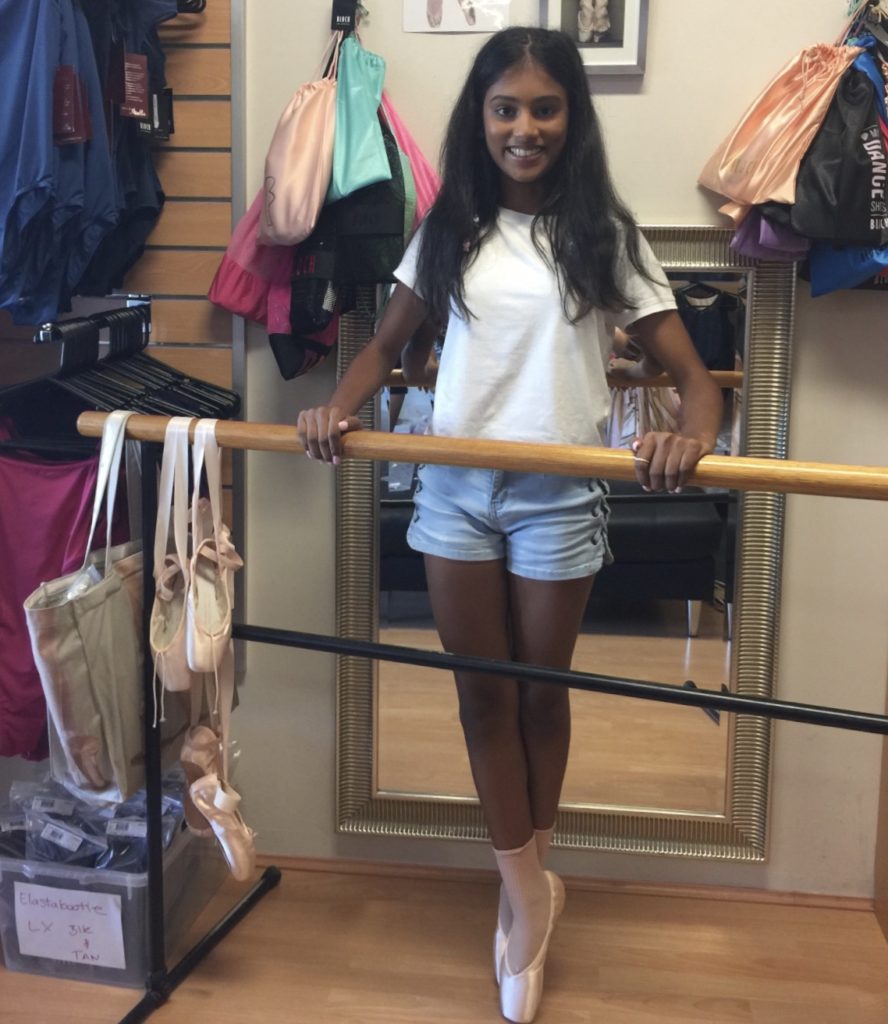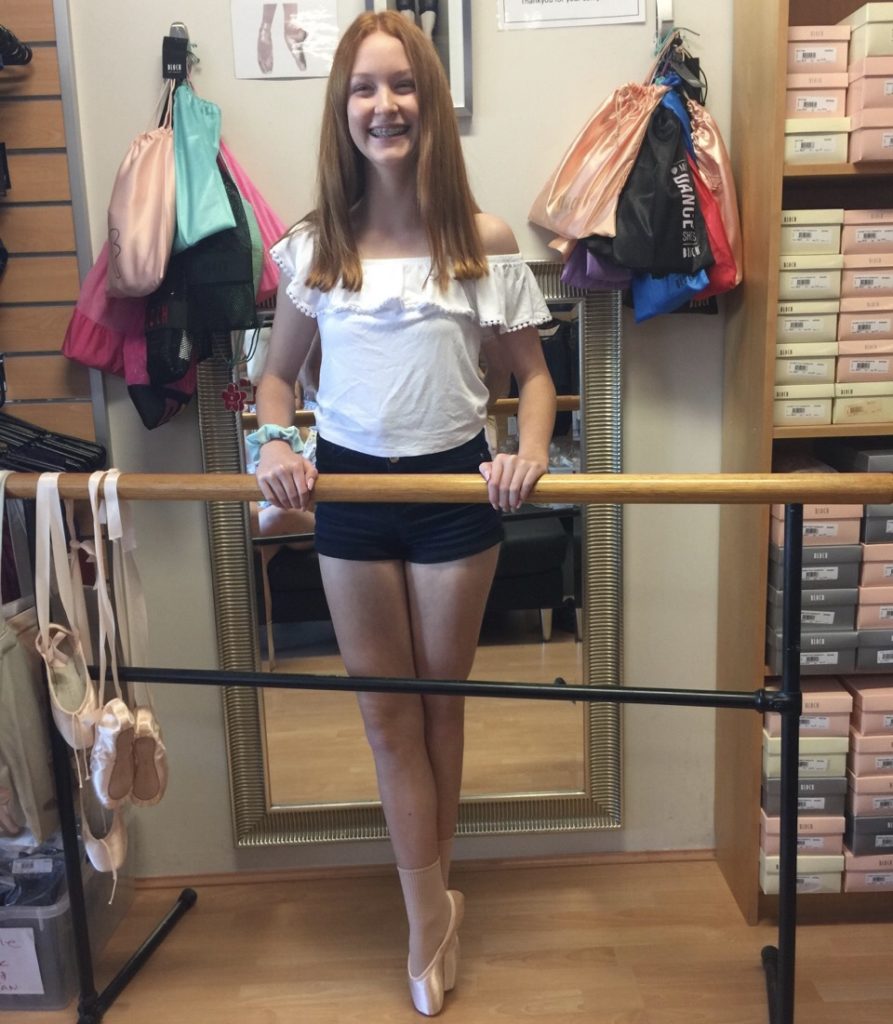Possibly one of the most exciting and anticipated time in a young dancer’s life is they day she gets fitted for her first pair of pointe shoes. I was recently had to privilege of experiencing this special day with three of our Intermediate Foundation dancers – Katherine, Tiarra & Jorja.
We all met at Costume & Ballet Centre in Mount Hawthorn with much anticipation (and plenty of giggles!) The girls were very lucky that Katherine’s older sister Mikhayla was also coming for a refit (she has been en pointe for two years now) and could demonstrate to the girls what to do.
The process is quite lengthy as not only do the shoes need to be the right length, width & depth for the individuals foot, the pointe shoes also come in different strengths and shapes as well. Some girls may have slimmer toes, others shorter, some may have a huge space between their toes… and this all effects which shoe. Our girls tried on approximately 20 or so different pairs before finding the right ones!
The ladies then gave the Mums a pep talk about how to sew the ribbons and elastics on (lucky girls…my Mum used to make me do my own!) and were even so kind to draw on exactly where the ribbons are to be sewn!

Of course we had to have a mini celebration afterwards with coffees and cake at a local cafe. A lovely way to spend the afternoon, so thank you again for inviting me girls!
From everyone at EBA we wish all of our students undertaking pointe classes for the first time this year all the best with their journey! Be sure to ask the girls how they are finding it if you see them at the studio!
Some things you may not know about Pointe Shoes
As much as dancing en pointe is just stunning and beautiful to watch, so many times throughout my dancing career I have said to myself “who even invented this dancing on your toes business!” Well today I found out the answer…
The first dancers to rise up onto their toes did so with an invention by Charles Didelot in 1795. His “flying machine” lifted dancers upward, allowing them to stand on their toes before leaving the ground. This lightness and ethereal quality was so well received by audiences and, as a result, choreographers began to look for ways to incorporate more pointe work into their pieces. And so it stuck!
Ballerinas of the 18th & 19th century would wrap their feet in leather, darning the ends in order for them to hold their shape although not offering much support. The modern pointe shoe is now usually made of glues layers of satin (kind of like a paper mache effect) in order to get the hardness, with a flat platform on the toe for more sturdiness.
Starting work en pointe is not just dependent on your feet. Just like all aspects of ballet, there are a hundred different things dancers need to think of at once! There is a huge use of core strength, turnout control, balance, inner thigh engagement in addition to ankle and foot strength.
My colleague, dance physiotherapist Lisa Howell, has a wealth of knowledge about transitioning into pointe work, and I have listed a wonderful resource of hers on YouTube below for those interested in learning more:
Lisa Howell:
https://www.youtube.com/watch?v=-RKOP5zrL44
If you have any questions about when your daughter will be ready to commence pointe classes, or would like some help with some pre-pointe exercises, please don’t hesitate to ask Miss Erin or Miss Amanda.



